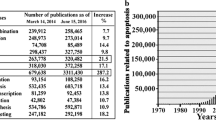Abstract.
The mechanism of the immunosuppressive effects of glycine and its pathophysiological applications are discussed in this review. Glycine has been well characterized in spinal cord as an inhibitory neurotransmitter which activates a glycine-gated chloride channel (GlyR) expressed in postsynaptic membranes. Activation of the channel allows the influx of chloride, preventing depolarization of the plasma membrane and the potentiation of excitatory signals along the axon. Glycine has recently been shown to have similar inhibitory effects on several white blood cells, including hepatic and alveolar macrophages, neutrophils, and lymphocytes. Pharmacological analysis using a GlyR antagonist strychnine, chloride-free buffer, and radiolabeled chloride has provided convincing evidence to support the hypothesis that many white blood cells contain a glycine-gated chloride channel with properties similar to the spinal cord GlyR. Molecular analysis using reverse transcription-polymerase chain reaction and Western blotting has identified the mRNA and protein for the β subunit of the GlyR in total RNA and purified membrane protein from rat Kupffer cells. Dietary glycine is protective in rat models against endotoxemia, liver ischemia-reperfusion, and liver transplantation, most likely by inactivating the Kupffer cell via this newly identified glycine-gated chloride channel. Glycine also prevents the growth of B16 melanomas cell in vivo. Moreover, dietary glycine is protective in the kidney against cyclosporin A toxicity and ischemia-reperfusion injury. Glycine may be useful clinically for the treatment of sepsis, adult respiratory distress syndrome, arthritis, and other diseases with an inflammatory component.
Similar content being viewed by others
Author information
Authors and Affiliations
Additional information
Received 3 June 1999; received after revision 16 August 1999; accepted 17 August 1999
Rights and permissions
About this article
Cite this article
Wheeler, M., Ikejema, K., Enomoto, N. et al. Glycine: a new anti-inflammatory immunonutrient. CMLS, Cell. Mol. Life Sci. 56, 843–856 (1999). https://doi.org/10.1007/s000180050030
Issue Date:
DOI: https://doi.org/10.1007/s000180050030




